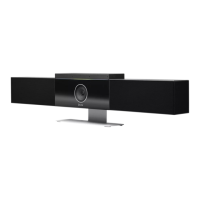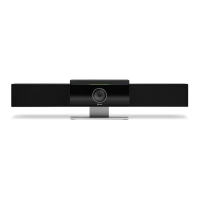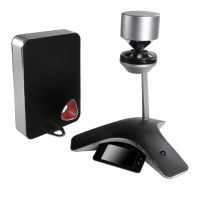Design Guide for the Polycom SoundStructure C16, C12, C8, and SR12
C - 22
the following figure, not only are listener 2 and listener 3 farther away from the
loudspeaker than listener 1 and receive less audio due to the inverse square
relationship, but they also receive less audio from the loudspeaker due to the
inherent 6 dB difference between the off-axis response from the on-axis
response of the loudspeaker.
While this example shows a single loudspeaker and multiple participants,
most rooms will require multiple loudspeakers to provide enough coverage
that the remote audio can be heard at a comfortable level by all the
participants, regardless of where they are sitting.
There are numerous rules of thumb for how many loudspeakers and the
amount of power required in a particular size room and there are also software
tools that are freely available to help with the power requirements and
loudspeaker placement for a given sized room.
One rule of thumb is that the typical ceiling-mounted loudspeaker will have a
coverage area of approximately 100 sq. feet at ear level assuming a 9 foot
ceiling - shown in the following figure as a radius of about 5 ½ feet. Depending
on how close the loudspeakers are clustered, there will be different levels of
audio that are heard by local participants. As shown in the following figure,
clustering the loudspeakers farther apart (about 11 feet in this example) will
cover a larger area but have some significant level variation depending on
where the listeners are. Clustering the loudspeakers closer together will
increase the overlap and reduce the level variation that is heard by listeners
based on their position in the room. While tighter clusters (such as the right
hand of the following figure) will minimize the level variation, it will also
increase the cost of the system as more loudspeakers will be required to cover
a particular area. This is little benefit of increasing the number of loudspeakers
beyond the tightest pattern shown in following figure where the loudspeakers
are approximately 5½ feet apart.
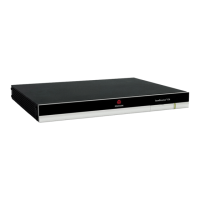
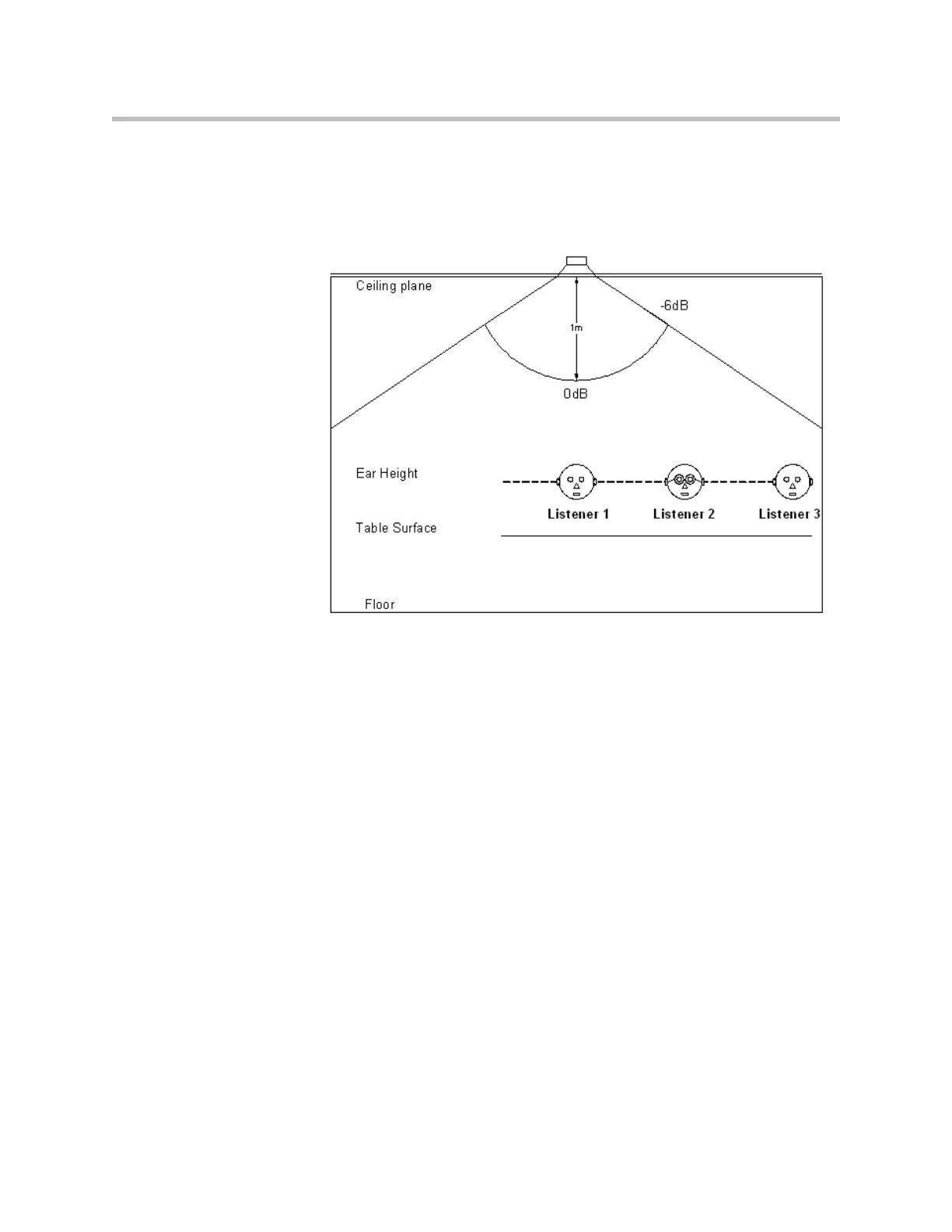